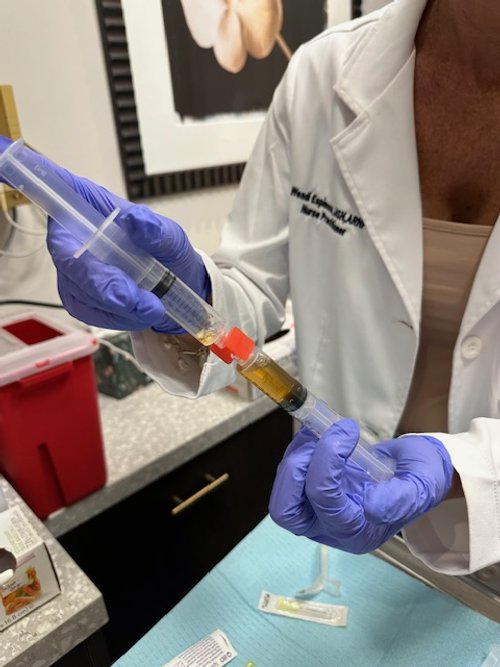
PRP vs PRF
PRP vs PRF
PRP (Platelet-Rich Plasma) injections are obtained by drawing a small amount of your blood and then spinning it down in a centrifuge to yield red blood cells at the bottom and liquid gold colored platelets on top. This liquid gold is then put into syringes with blood thinner and reinjected into your face or used as a topical serum during PRP Microneedling procedures. The main difference between PRP and PRF (Platelet-Rich Fibrin) is the speed at which they are spun in the centrifuge, and the addition of blood thinner to PRP. To obtain PRF, after your blood is drawn, it is spun down in the centrifuge at a slower rate, allowing the red blood cells to go down to the bottom while keeping the fibrin and the white blood cells on top. The fibrin acts as a network where the platelet will become attached to the fibrin and then become activated for a period of about two weeks. For PRP itself, the activation without the fibrin is only about four to six hours, which gives good clinical results, but it does not give a longer amount of time that you would want to have your body process it.
When using PRF for facial rejuvenation, there are a couple of different methods a practitioner can utilize. One really popular method is by having it used in a cannula underneath your skin so you get a volumization while also simulating collagen underneath, resulting in a healthy glow. The other method of using PRF is by having it as a serum after microneedling. When you use PRF on top of your skin after microneedling as a serum, it allows the PRF to penetrate down into the skin and absorb, helping to improve your skin texture and skin tone along with fine lines, acne scars, and wrinkles.

